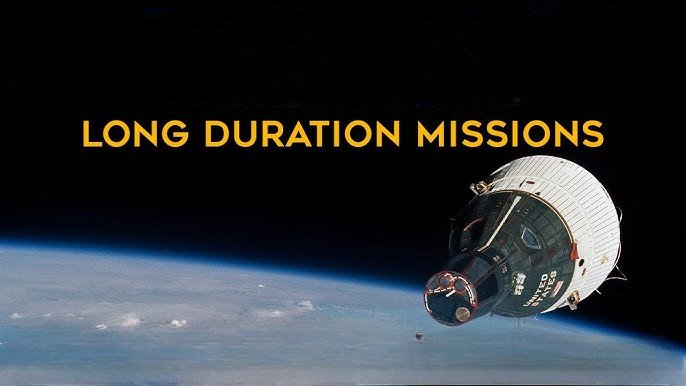Advancements in space habitats for long-duration missions focus on creating sustainable, safe, and functional living environments that support human life for extended periods in space. These innovations are critical for future missions to the Moon, Mars, and beyond, where astronauts must live and work autonomously in harsh and isolated environments.
Key Areas of Advancements in Space Habitats
1. Structural Design and Materials
- Lightweight and Durable Materials:
- Use of advanced composites, aluminum alloys, and high-strength polymers to reduce mass and withstand harsh conditions.
- Example: Kevlar and Vectran are used in inflatable habitats for protection against micrometeoroids.
- Inflatable Modules:
- Expandable structures like Bigelow Aerospace’s B330 and NASA’s TransHab prototypes offer large, lightweight living spaces.
- Compact for transport and deployable in space, maximizing usable volume.
- 3D-Printed Habitats:
- On-site construction using local resources (e.g., regolith) to build habitats on the Moon or Mars, reducing the need for heavy payload launches.
- Example: NASA’s Artemis program plans to use robotic 3D printers for constructing lunar habitats.
2. Life Support Systems
- Closed-Loop Life Support:
- Systems recycle water, oxygen, and waste to reduce resupply needs.
- Example: ESA’s MELiSSA (Micro-Ecological Life Support System Alternative) is developing bioregenerative systems.
- Air Filtration and Monitoring:
- Advanced systems to monitor and control air quality, remove CO2, and regulate oxygen levels.
- Water Recovery:
- Technologies like NASA’s Water Recovery System recycle wastewater, urine, and humidity into potable water.
3. Radiation Protection
- Passive Shielding:
- Use of hydrogen-rich materials like polyethylene, water, or regolith to block radiation.
- Active Shielding:
- Electromagnetic fields or plasma shields to deflect charged particles.
- Underground Habitats:
- Buried or partially submerged habitats provide natural shielding against cosmic radiation and solar flares.
4. Energy Systems
- Solar Power:
- High-efficiency solar panels and energy storage systems ensure a reliable power supply.
- Example: Deployable solar arrays for habitats on the Moon or Mars.
- Nuclear Power:
- Compact nuclear reactors, like NASA’s Kilopower, provide continuous energy in environments with limited sunlight.
5. Thermal Control
- Advanced insulation and thermal regulation systems manage extreme temperature fluctuations in space.
- Active thermal systems, such as heat pumps and radiators, dissipate excess heat.
6. Modular and Flexible Designs
- Expandable Modules:
- Modular habitats can be added or reconfigured as needed.
- Example: The International Space Station (ISS) serves as a model for modular habitat construction.
- Multi-Purpose Spaces:
- Designs maximize efficiency by combining living, working, and recreation areas.
7. Autonomous and Smart Systems
- Artificial Intelligence (AI):
- AI systems monitor habitat conditions, optimize resource usage, and assist in daily operations.
- Robotics:
- Robots perform maintenance, repairs, and construction tasks autonomously or remotely.
- Smart Habitats:
- Use of IoT sensors and automation to adjust lighting, temperature, and air composition based on occupant needs.
8. Psychological and Social Well-Being
- Biophilic Design:
- Incorporating natural elements, such as simulated views of Earth, plants, or water features, to reduce stress.
- Private and Shared Spaces:
- Habitats include personal quarters for privacy and communal areas for group activities.
- Virtual Reality (VR):
- VR systems provide recreation, mental health support, and virtual windows to simulate familiar environments.
9. Food Production
- Hydroponics and Aeroponics:
- Soilless farming systems grow fresh produce within habitats.
- Bioreactors:
- Cultivation of algae or other microorganisms as a supplementary food source.
- Robotic Farming:
- Automation of food production reduces human labor and ensures consistent yields.
10. Mobility and Surface Integration
- Pressurized Rovers:
- Habitats integrated with mobile systems to allow astronauts to travel and work on planetary surfaces.
- Example: NASA’s Lunar Gateway will support surface habitats and pressurized mobility.
- Adaptable Interfaces:
- Docking and connection points for rovers, power systems, and modular extensions.
Current and Planned Space Habitat Projects
- Lunar Gateway (NASA, ESA, JAXA, CSA)
- A modular space station orbiting the Moon to serve as a hub for lunar missions.
- Features advanced life support, docking systems, and living quarters.
- Mars Habitat Concepts (NASA and SpaceX)
- 3D-printed structures using Martian regolith to protect against radiation and support long-term missions.
- Self-sustaining life support and food production systems.
- Bigelow Expandable Activity Module (BEAM)
- A prototype expandable module tested on the ISS to demonstrate inflatable habitat technology.
- Lunar Surface Habitat (Artemis Program)
- Plans to develop sustainable habitats for long-term human presence on the Moon.
- ESA’s Moon Village
- A vision for an international lunar base with collaborative infrastructure, including habitats and research facilities.
Challenges in Developing Space Habitats
- Radiation Exposure
- Ensuring sufficient protection against long-term cosmic and solar radiation.
- Reliability
- Systems must operate with minimal maintenance and high reliability for years in isolated environments.
- Cost
- Developing and launching habitats remains prohibitively expensive.
- Human Factors
- Addressing the psychological and social challenges of confined, long-duration living.
- Resource Availability
- Developing in-situ resource utilization (ISRU) systems for sustainable operations.
Future Directions
- In-Situ Resource Utilization (ISRU)
- Leveraging local resources for construction, oxygen production, and fuel synthesis.
- Advanced Materials
- Development of self-healing materials and lightweight composites for enhanced durability.
- Bioregenerative Systems
- Fully closed-loop ecosystems to sustain life indefinitely in space.
- Global Collaboration
- International efforts to standardize habitat designs and share technological advancements.
Conclusion
Advancements in space habitats are transforming the vision of long-duration missions from science fiction to reality. Through innovations in materials, life support, and automation, these habitats aim to provide sustainable, safe, and comfortable living environments, enabling humans to thrive on the Moon, Mars, and beyond.
Hashtags
#SpaceHabitats #LongDurationMissions #SpaceLivingTech #HabitatInnovation #SpaceStationLife #TechnologicalAdvancements #NextGenSpaceHabitats #AdvancedHabitatTech #SmartSpaceHabitats #AIInSpaceLiving #SustainableSpaceLiving #EcoFriendlySpaceHabitats #SelfSufficientHabitatTech #ClosedLoopSystems #GreenSpaceHabitats #LifeSupportSystems













